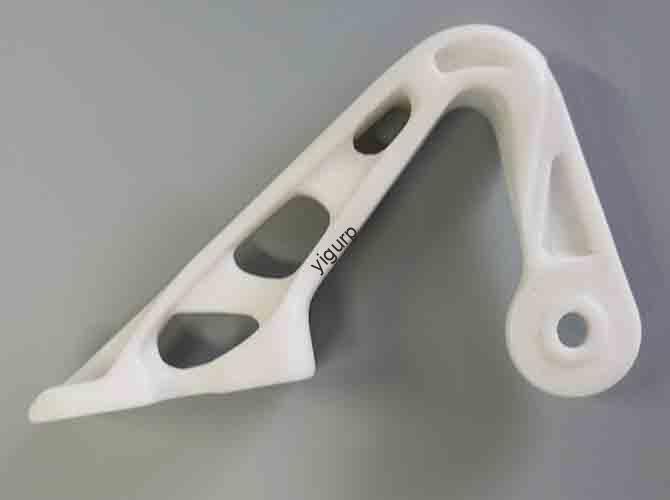In the era of smart manufacturing, 3D high-precision printing has redefined how industries create complex, Высококачественные компоненты. Unlike traditional subtractive methods that carve away material, this technology builds objects layer by layer—unlocking possibilities for intricate designs, Более быстрое производство, and tailored solutions. This guide dives into its core principles, Ключевые преимущества, реальные приложения, and why it’s a critical tool for forward-thinking businesses.
1. Core Principles of 3D High-Precision Printing
В его сердце, 3D high-precision printing relies on a “layer-by-layer deposition” процесс, driven by digital models (НАПРИМЕР., Файлы CAD). This approach eliminates the limitations of traditional manufacturing, where complex shapes often require expensive molds or multiple machining steps. Below is a breakdown of how it works, plus a comparison to subtractive methods.
1.1 Пошаговый рабочий процесс
- Digital Modeling: Create a detailed 3D model using software (НАПРИМЕР., Солидворкс, Слияние 360). The model is sliced into thousands of thin 2D layers (typically 10–100 microns thick).
- Материал подготовка: Load specialized materials (пластмассы, металлы, керамика) в 3D -принтер. Each material is optimized for precision—e.g., metal powders for aerospace parts, biocompatible resins for medical devices.
- Печата по слону за слоем: The printer deposits or cures one layer at a time. Например:
- Powder-based systems (НАПРИМЕР., СЛМ) use lasers to fuse metal powder.
- Resin-based systems (НАПРИМЕР., DLP) use light to harden photosensitive resin.
- Пост-обработка: Удалить часть, чистый лишний материал, and apply finishing steps (НАПРИМЕР., heat treatment for metals, polishing for plastics) to enhance strength and precision.
1.2 3D High-Precision Printing vs. Traditional Subtractive Manufacturing
| Особенность | 3D High-Precision Printing | Traditional Subtractive Manufacturing (НАПРИМЕР., Обработка с ЧПУ) |
| Использование материала | Минимальные отходы (только использует необходимый материал) | Высокие отходы (carves away up to 70% of raw material) |
| Complexity Support | Обработает сложные геометрии (НАПРИМЕР., внутренние каналы) | Struggles with complex shapes (requires multiple setups) |
| Время выполнения | Быстрый (prototypes in hours/days) | Медленный (molds/tooling take weeks/months) |
| Настройка | Легкий (adjust digital model only) | Трудный (requires new tooling for each design) |
2. Key Advantages of 3D High-Precision Printing
What makes this technology a game-changer? Its four core strengths address critical pain points for industries like aerospace, Здравоохранение, and automotive—from reducing costs to enabling innovation.
2.1 Преимущество поломка (с данными)
| Преимущество | Подробности & Реальное воздействие |
| Micron-Level Accuracy | Achieves precision as low as 5–10 microns (0.005–0.01 mm)—critical for medical implants and aerospace components. Например, dental crowns printed with this precision fit patients’ teeth perfectly. |
| Непревзойденная свобода дизайна | No shape restrictions: Print parts with internal lattices, Полые структуры, or organic curves. This has enabled lighter aerospace parts (reducing fuel costs by 15–20%) and personalized medical devices. |
| Diverse Material Support | Works with over 100+ материалы, включая: – Металлы: Титан (для имплантатов), алюминий (для аэрокосмической промышленности). – Пластмассы: АБС (Для автомобильных деталей), биосовместимые смолы (Для хирургических инструментов). – Керамика: Циркония (for dental crowns), глинозем (for industrial sensors). |
| Shortened Production Cycles | Cuts lead times by 50–80% compared to traditional methods. Например, automotive prototypes that once took 6 weeks to make can now be printed in 2–3 days—accelerating R&Дюймовый. |
3. Real-World Applications of 3D High-Precision Printing
This technology isn’t just innovative—it’s practical. Ниже приведены наиболее эффективные варианты использования, with industry-specific examples.
3.1 Аэрокосмическая промышленность
- Lightweight Components: Prints titanium or aluminum parts (НАПРИМЕР., двигатели кронштейны, топливные сопла) that are 30–50% lighter than traditional parts. Это снижает вес самолета, lowering fuel consumption by 10–15%.
- Complex Engine Parts: Creates turbine blades with internal cooling channels—impossible with CNC machining. These blades improve engine efficiency by 20%.
3.2 Healthcare Industry
- Custom Medical Devices: Produces personalized prostheses (НАПРИМЕР., artificial hips) and orthopedic stents. Using patient scans, parts fit perfectly—reducing post-surgery complications by 40%.
- Surgical Tools: Prints high-precision tools (НАПРИМЕР., biopsy forceps) with 10-micron accuracy. These tools are more durable than plastic alternatives and cost 30% меньше для производства.
3.3 Автомобильная промышленность
- Быстрое прототипирование: Tests new designs (НАПРИМЕР., Компоненты приборной панели, Дверные ручки) В течение нескольких дней вместо недель. This speeds up new car launches by 3–6 months.
- Customized Parts: Makes limited-edition parts (НАПРИМЕР., racing spoilers) for high-end vehicles. No tooling is needed—saving manufacturers $50,000+ за дизайн.
Yigu Technology’s Perspective on 3D High-Precision Printing
В Yigu Technology, мы рассматриваем 3D high-precision printing как катализатор промышленной трансформации. Its ability to balance accuracy, скорость, and material diversity helps our clients solve unique challenges—from creating lightweight aerospace parts to personalized medical devices. We’ve integrated this technology into our solutions to cut client lead times by 60% and reduce material waste by 50%. По мере продвижения материалов и принтеров, we expect it to become the standard for high-value manufacturing—especially in sectors where precision and customization are non-negotiable.
Часто задаваемые вопросы: Common Questions About 3D High-Precision Printing
- Q.: Is 3D high-precision printing only for small parts?
А: Нет. While it excels at small, подробные части, industrial printers can produce large components (НАПРИМЕР., 1m x 1m aerospace panels) with the same precision. The key is choosing the right printer and material.
- Q.: Are 3D-printed high-precision parts as strong as traditionally made parts?
А: Yes—often stronger. Например, metal parts printed via SLM have a 99.9% плотность (same as forged metal) and can withstand high temperatures. Пост-обработка (НАПРИМЕР., термическая обработка) further boosts strength.
- Q.: How much does a 3D high-precision printer cost?
А: Prices vary by size and capability: – Desktop models (for small plastics): \(5,000- )50,000. – Industrial metal printers (для аэрокосмической/медицинской): \(200,000- )2 миллион. The cost is offset by lower material waste and faster lead times.
